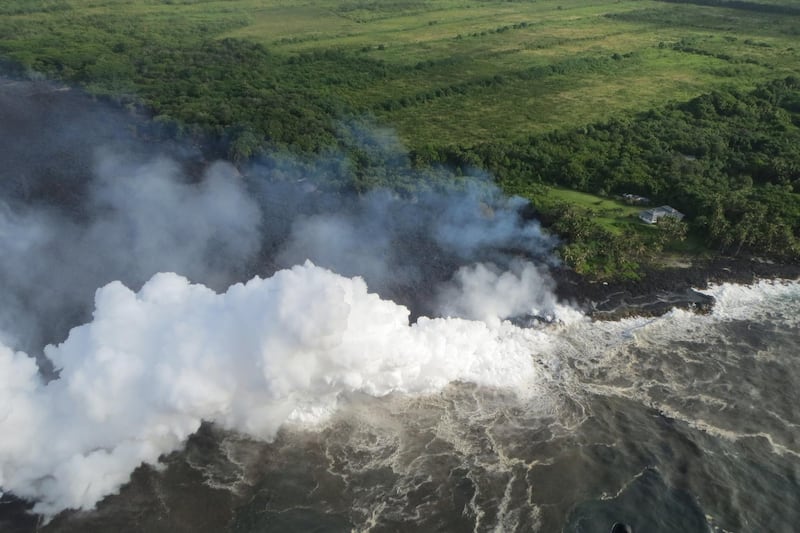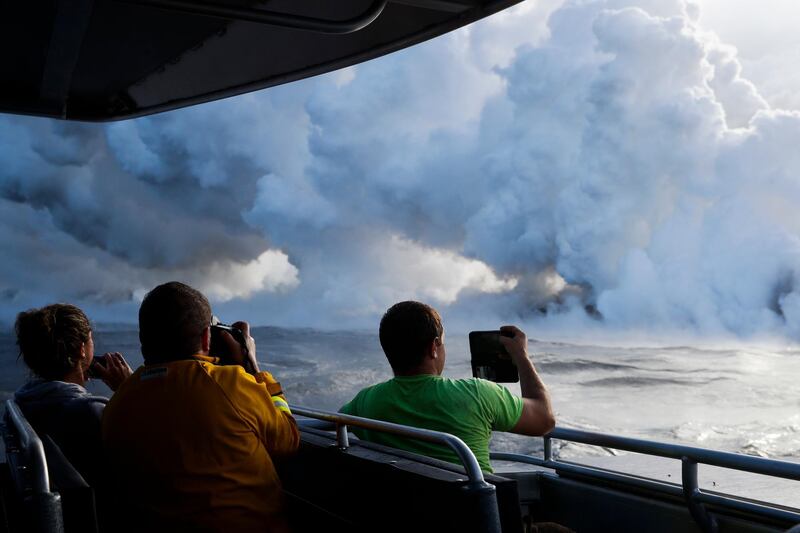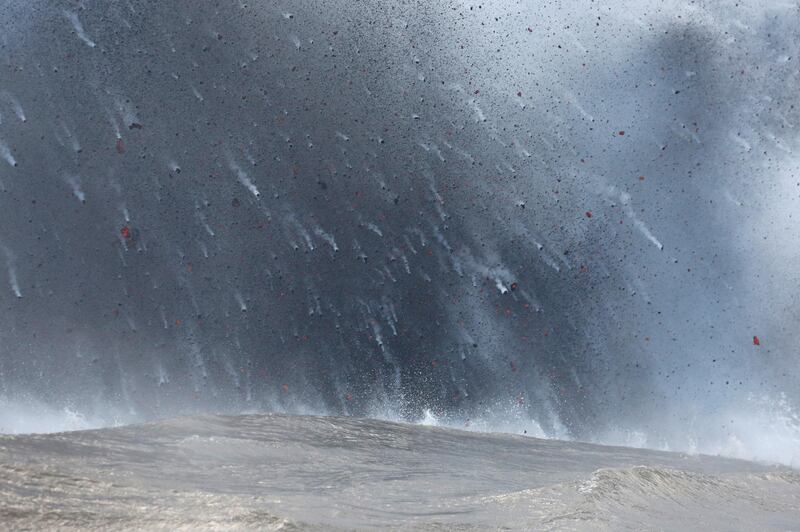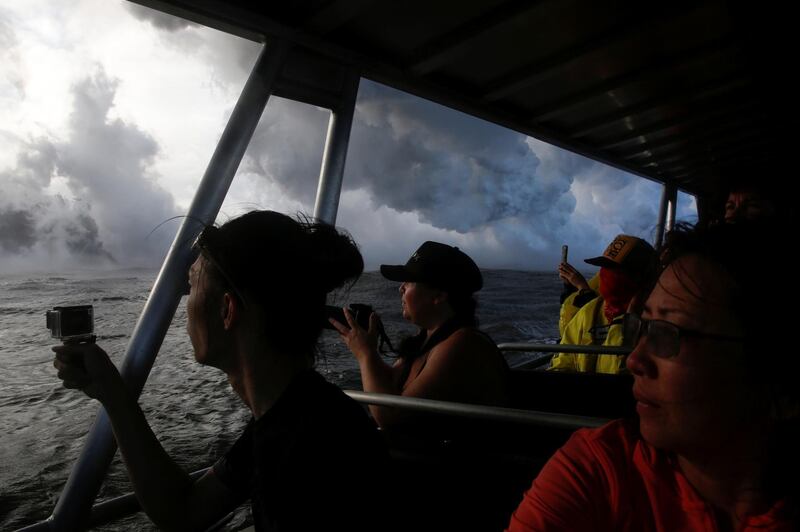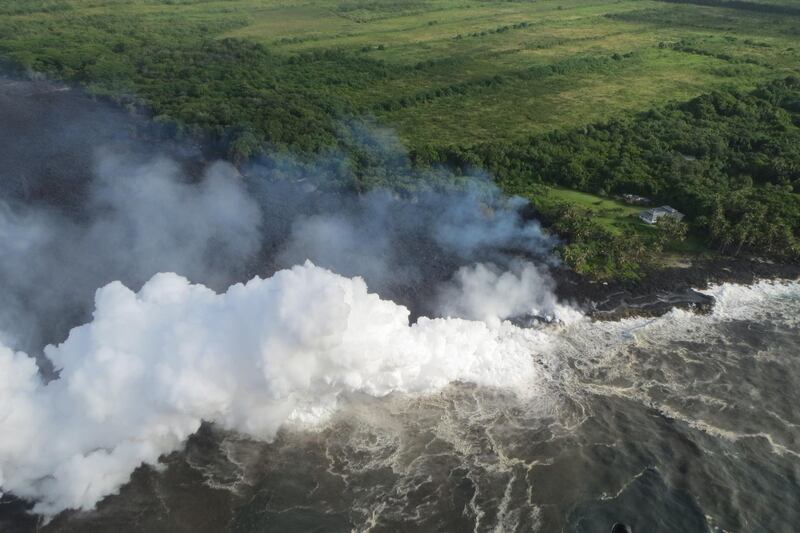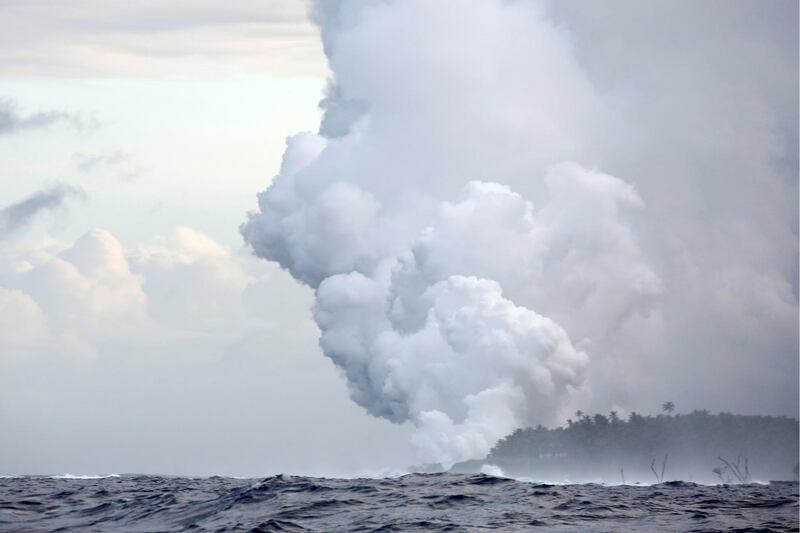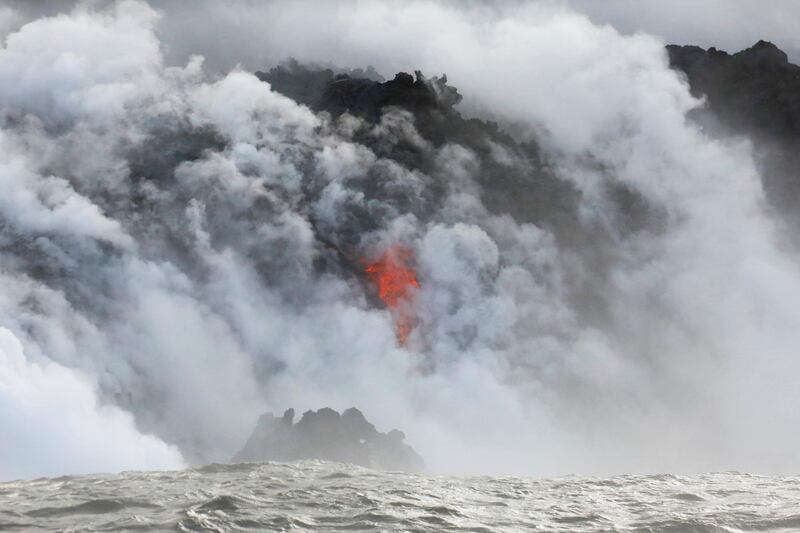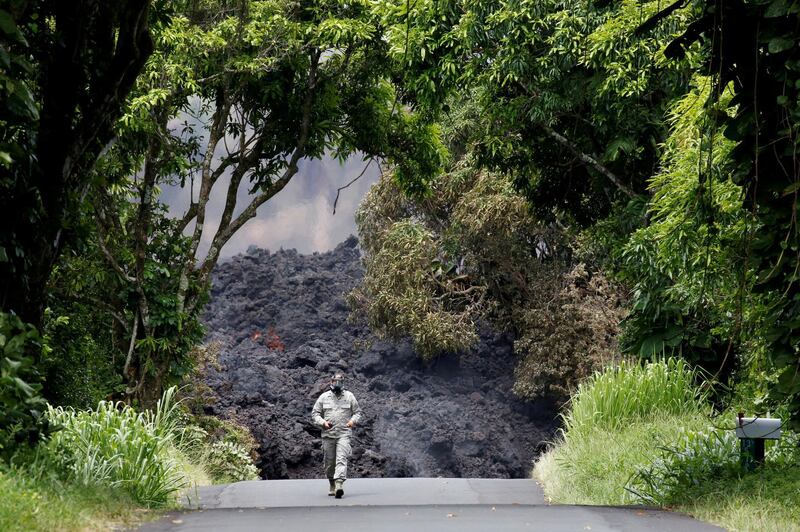The eruption of Kilauea volcano in Hawaii sparked new safety warnings about toxic gas on the Big Island's southern coastline after lava began flowing into the ocean and setting off a chemical reaction.
The molten rock started pouring into the sea over the weekend. It's been generating plumes of lava haze or "laze" as it interacts with seawater.
It's just the latest hazard from a weeks-old eruption that has so far generated earthquakes and featured gushing molten rock, giant ash plumes and sulfur dioxide. The eruption has destroyed more than 40 buildings forced more than 2,000 people to evacuate.
Lava haze is made of dense white clouds of steam, toxic gas and tiny shards of volcanic glass. Janet Babb, a geologist with the Hawaiian Volcano Observatory, says the plume "looks innocuous, but it's not."
When lava enters the ocean the seawater cools the molten rock, which forms a glass that shatters. Tiny pieces are picked up by the steam cloud.
"Just like if you drop a glass on your kitchen floor, there's some large pieces and there are some very, very tiny pieces," Babb said. "These little tiny pieces are the ones that can get wafted up in that steam plume."
The clouds also contain hydrochloric acid, which is about as corrosive as diluted battery acid. It can irritate the skin and eyes and cause breathing problems.
______________
Read more:
[ In pictures: Dramatic images show lava flowing into Pacific Ocean ]
Hawaiians putting themselves at risk by ignoring evacuation order
______________
No major injuries have been reported from lava haze. The U.S. Geological Survey says laze contributed to two deaths in 2000, when seawater washed across recent and active lava flows.
The gas clouds initially appear on the shoreline, but trade winds on Sunday carried plumes about 24 kilometres to the southwest. The cloud was offshore, running parallel to the coast.
When the winds die down, the plume can flatten out. Its size, meanwhile, depends on the volume of lava falling into the sea.
Meanwhile, late Sunday or early Monday, lava entered and then stalled on the property of a geothermal plant. Officials earlier this month removed 190,000 litres of stored flammable gas from the site to reduce the chance of explosions.
Hawaii County spokeswoman Janet Snyder said the lava stalled behind a berm on the property boundary.
The plant harnesses energy from the volcano for electricity. Underground wells bring up steam and hot liquid, and the steam feeds a turbine generator.
